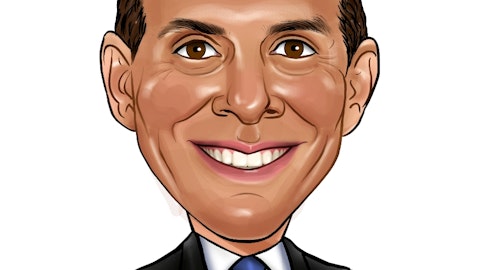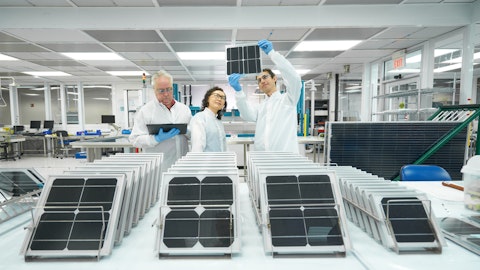John Hunter: Yeah, Andy, thanks for the questions. I’ll take them in order. In terms of the positioning, we are looking to go into a pre-chemo setting. Although obviously the recent success of PLUVICTO has sort of — has to be factored in when we start to really plan out where we’re going to target the Phase 3, but that is still our plan. With regards to the PET imaging, if I understood the question correctly, if the question was, does the broader use of PSMA PET imaging agents increase the likelihood and maybe comfort of investigators using our PET imaging agent for CD46? I would say the answer is yes. In metastatic castration-resistant prostate cancer, it’s become very common for physicians to now do that imaging for PLUVICTO and other competitive PSMA radionuclide-labeled antibodies.
And then finally, with regards to the additional number of patients, so the interim data last year at ASCO had 21 patients who were resist-evaluable. I think that they had maybe like mid-30 number of patients in that. So there are additional patients who have entered into the trial since that readout and also some of the patients who were on drug then continue to receive treatment, which I think will have an impact on the measured progression-free survival.
Thane Wettig: Thanks, John. And Sandy, we’re going to follow the data and ultimately, these men undergo several lines of treatments because none of these treatments that are available today or probably even into the near future are curative and so the Phase 2 trial will be really, really important to inform then the Phase 3 design.
UnidentifiedAnalyst: Got it. Okay. Maybe one last one about the generics, Roxadustat. So I guess in the US, it’s not really an approach for the originator to drop the price and start a price competition. Is that not the case for China? Is there a case where you can kind of drop the price and really compete with generic entrant?
Thane Wettig: Yeah, Chris. Let me start and then you can follow up. It’s really dependent, Andy, on really the product that you’re talking about. As you know, in the US, it’s very, very rare for the originator to drop the price just because there’s no way you could ever make up the value and volume. I think because of the way that the volume-based procurement or purchasing works in China, I think that there is likely an opportunity to decrease the price to some extent, but nowhere near what you would see a generic price point to be. Again, just because it doesn’t make sense to do that. You’d maintain volume at a higher price and be far better off than maintaining more volume at a much lower price. So Chris, maybe if you want to speak to Roxadustat in particular?
Chris Chung: Yeah, absolutely, Thane. So thank you for the question. So looking at how multinationals and the bigger brands have historically responded to generic competition. First, when there’s generic competition, the decision to lower the price is solely the election of the originator drug and on the market, we’ve seen ranges from 0% to 15%. Once there are enough number of generic drugs on the market and the government calls volume-based purchasing, the originator drug can elect to still participate in the market at a particular preset discount that is required by the government. So historically, the two bands are either 10% or 30%, and for the bigger brands, it’s typically 30%. And this is dictated by the government.
Operator: And our next question comes from the line of Jason Gerberry with Bank of America.
UnidentifiedAnalyst: Hi, good afternoon. This is Dina [ph] on for Jason. We just had a couple questions on FG-3246. This is based on the activity that you’re seeing in the MCRPC patients in the Phase 1 trial thus far. Are you planning to assess 3246 in earlier lines? And I know you’re planning to enrich for patients that express CD46. Could you just please remind us what percentage of the patient population you expect to be in this subgroup of CD46 expressors? Thank you so much.
Thane Wettig: John?




